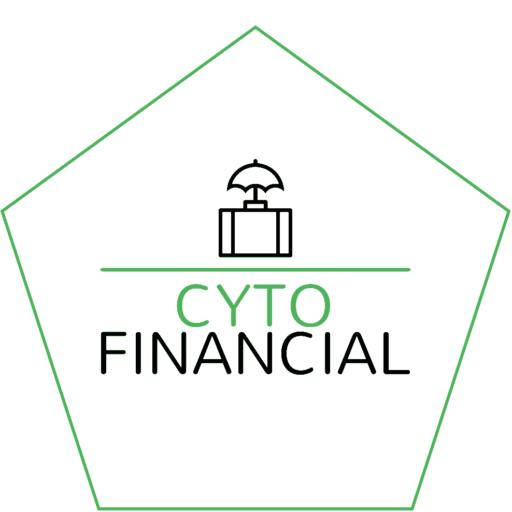Small business owners face a challenging benefits landscape in 2026. With health insurance premiums jumping 11% and new tax laws reshaping the playing field, getting your supplemental benefits strategy right isn’t just nice-to-have: it’s essential for attracting talent and keeping your best people from walking out the door.
Let’s cut through the noise and get you up to speed on what really matters for your business this year.
What Are Supplemental Benefits (And Why Should You Care)?
Supplemental benefits are everything beyond the legal must-haves like workers’ comp and unemployment insurance. Think dental, vision, life insurance, disability coverage, wellness programs: the perks that make employees think twice before jumping ship to your competitor.
Here’s the thing: your competitors are already offering these benefits. According to recent data, companies offering comprehensive supplemental benefits see 40% lower turnover rates. With the tight labor market continuing into 2026, can you really afford not to compete?

The Big Changes Hitting in 2026
Premium Shock is Real
Health insurance costs are spiking hard this year. Small business premiums are expected to rise 11%: one of the steepest increases we’ve seen in recent years. That’s an extra $1,000+ per employee annually for many businesses. Ouch.
Tax Relief is Coming
But here’s some good news: the “One Big Beautiful Bill Act” is throwing small businesses a lifeline. The 20% Qualified Business Income deduction is now permanent, with a new minimum deduction of at least $400 for low-income earners. These changes apply retroactively to January 20, 2025, which could mean significant savings.
FSA Updates
Flexible Spending Account limits got a bump. Employees can now carry over $680 from their medical FSA into 2026 (up from $660), and the maximum annual benefit increased to $2,200.
Step 1: Get Your Compliance Foundation Right
Before you even think about supplemental benefits, make sure you’re covering the basics. Working with a CYTO Financial advisor can help you navigate the maze of federal and state requirements without missing critical deadlines or facing penalties.
Federal Requirements:
- Unemployment insurance
- Workers’ compensation
- FMLA (if you have 50+ employees)
- ACA compliance (50+ full-time employees)
State-Specific Requirements:
Some states require disability insurance (California, Hawaii, New Jersey, New York, Puerto Rico, Rhode Island). More than a dozen states now have paid family leave laws, and states like Maine, Nevada, and Illinois have mandatory PTO requirements.
A CYTO Financial advisor can audit your current compliance status and create a checklist ensuring you’re covered in every jurisdiction where you operate.

Step 2: Choose Your Supplemental Benefits Strategy
This is where many small business owners get overwhelmed. With hundreds of options available, how do you know what your employees actually want?
The Must-Haves:
- Dental and vision coverage (consistently ranked as top employee priorities)
- Basic life insurance with supplemental options
- Short and long-term disability insurance to cover a paycheck
- Accidental Insurance coverages for children and spouses
The Nice-to-Haves:
- Wellness programs
- Mental health support
- Supplemental product options
- Critical illness coverage
The Game-Changers:
- Section 125 cafeteria plans (let employees pay with pre-tax dollars)
- Health Savings Accounts paired with high-deductible plans
- Flexible spending accounts
Your CYTO Financial advisor can help you survey your employees and analyze which benefits will give you the biggest bang for your buck. They’ll also show you how to package benefits in a way that maximizes tax advantages for both you and your employees.
Step 3: Navigate the Cost Management Challenge
With double-digit premium increases hitting, you need a solid strategy to manage costs without gutting your benefits package.
Smart Cost-Sharing Strategies:
Instead of dropping coverage, consider adjusting plan design elements. Higher deductibles paired with HSAs can reduce premiums while providing tax benefits. Your CYTO Financial advisor can model different scenarios to show you exactly how much each option will cost your business and your employees.
Leverage New Tax Benefits:
The One Big Beautiful Bill Act provisions can help offset rising benefit costs. Work with your CYTO Financial advisor and your accountant to maximize the QBI deduction and explore how other provisions might reduce your overall tax burden, freeing up resources for benefits investments.
Consider Alternative Arrangements:
- Professional Employer Organizations (PEOs) for businesses under 100 employees
- Captive insurance arrangements for larger companies
- Self-funded plans for predictable, healthy workforces
Step 4: Implementation and Communication
Getting benefits in place is only half the battle. Your employees need to understand what you’re offering and how to use it effectively.
Timeline Management:
Start planning now if you haven’t already. Open enrollment typically occurs 60-90 days before your plan year begins, but given this year’s cost increases, earlier planning gives you more options. Your CYTO Financial advisor can create a detailed timeline ensuring you hit every deadline while giving employees adequate notice of changes.
Employee Communication:
Rising costs often mean difficult conversations about increased cost-sharing. Your CYTO Financial advisor can help you craft clear, honest communications that explain why changes are necessary while highlighting the value of your overall benefits package.
Ongoing Support:
Benefits administration doesn’t end at enrollment. Your CYTO Financial advisor provides year-round support for employee questions, claim issues, and plan adjustments as your business grows.
Making the Most of Section 125 Plans
Section 125 cafeteria plans deserve special attention because they provide immediate tax savings for both you and your employees. These plans allow employees to pay for various benefits with pre-tax dollars, including:
- Health insurance premiums
- Dental and vision coverage
- Flexible spending accounts
- Dependent care assistance
- Adoption assistance
The tax savings can be substantial: often 20-30% on covered expenses. Your CYTO Financial advisor can help you set up and administer these plans while ensuring full IRS compliance.

Staying Ahead of the Competition
Here’s what smart small business owners are doing in 2026:
Focus on Mental Health: With workplace stress at all-time highs, mental health benefits are becoming non-negotiable for top talent.
Embrace Flexibility: Remote work stipends, flexible PTO policies, and work-life balance benefits often cost less than traditional insurance but provide significant value to employees.
Think Long-Term: As your business grows toward 50 employees, prepare for ACA compliance well in advance. Your CYTO Financial advisor can help you model the costs and requirements so you’re not scrambled when you hit that threshold.
The Bottom Line
Supplemental benefits in 2026 aren’t just about checking boxes: they’re about building a competitive advantage in a tight labor market while managing dramatically rising costs. The combination of 11% premium increases and new tax benefits creates both challenges and opportunities that require expert navigation.
Working with a CYTO Financial advisor ensures you’re not going it alone. From compliance audits to cost modeling to employee communication strategies, having an expert in your corner means you can focus on running your business while knowing your benefits strategy is optimized for both attraction and retention.
Ready to build a benefits package that actually works for your business and your budget? The team at CYTO Financial is here to help you navigate these changes and create a strategy that positions your company for success in 2026 and beyond.

Contact CYTO Financial today to schedule your benefits strategy consultation and discover how the right supplemental benefits can become your secret weapon for attracting and keeping great employees.
